The Secrets Behind the Perfect Chinese Fried Rice Recipe
If you’ve ever wondered about the secrets behind the perfect Chinese fried rice recipe, you’ve come to the right place. This dish is not only a beloved staple in Chinese cuisine but also a favorite around the world. Mastering it requires a few tips and tricks, utilizing fresh ingredients, and employing the right techniques.
Choosing the Right Rice
One of the main ingredients in fried rice is, of course, the rice itself. Here’s what you need to know:
- Type of Rice: Long-grain rice, particularly Jasmine rice, is preferred due to its fluffy texture.
- Day-Old Rice: Using leftover rice that’s been refrigerated overnight is ideal. It dries out slightly, preventing mushiness when fried.
- Cooking Method: When preparing fresh rice, make sure to cook it with slightly less water to achieve a firmer texture.
Selecting Fresh Ingredients
Fresh ingredients make all the difference in achieving vibrant flavors in your fried rice. Here are some must-haves:
- Fresh vegetables like peas, carrots, and scallions.
- Protein options such as shrimp, chicken, pork, or tofu.
- Classic seasonings like soy sauce, sesame oil, and oyster sauce for a punch of flavor.
- Garlic and ginger add an aromatic essence.
The Cooking Technique
Proper technique can elevate your fried rice from good to spectacular. Follow these essential steps:
- Prep Your Ingredients: Chop all vegetables and proteins into small, even pieces for uniform cooking.
- Stir-Fry in Batches: Don’t overcrowd the pan; cook ingredients separately to ensure they sauté rather than steam.
- High Heat: Use high heat for cooking, which helps achieve that characteristic slight char on the rice.
- Order of Cooking: Start with proteins, move to aromatics (like garlic and ginger), then add veggies, and finally the rice.
- Seasoning at the Right Time: Add soy sauce toward the end to prevent burning and control the saltiness.
The Ideal Fried Rice Recipe
Now that you understand the secrets behind perfect Chinese fried rice, here’s a simple recipe to get you started:
| Ingredients | Quantity |
|---|---|
| Day-Old Rice | 4 cups |
| Vegetable Oil | 3 tbsp |
| Eggs | 2, beaten |
| Onion | 1, diced |
| Carrots | 1, diced |
| Peas | 1 cup |
| Soy Sauce | 3-4 tbsp (to taste) |
| Sesame Oil | 1 tsp |
| Green Onions | 2, sliced |
Instructions:
- Heat the vegetable oil in a large wok or skillet over medium-high heat.
- Add beaten eggs and let them scramble briefly, then remove and set aside.
- In the same pan, add onion and carrot; stir-fry until tender.
- Add peas and rice, mixing well. Stir-fry for a few minutes, allowing the rice to fry slightly.
- Add soy sauce and sesame oil; mix thoroughly. Return the scrambled eggs to the pan and add green onions.
- Cook for an additional minute before serving hot.
Now that you have the secrets of the perfect Chinese fried rice recipe, give it a try! This versatile dish can adapt to whatever ingredients you have on hand. For more tips and recipes, check out Serious Eats or The Spruce Eats for additional variations.
Enjoy your homemade Chinese fried rice as a main dish or side, and savor the authentic taste you’ve created!
Essential Ingredients for Authentic Fried Rice
Fried rice is a beloved dish around the world, and making authentic fried rice starts with the right ingredients. Understanding what goes into this dish can elevate your cooking and create a mouthwatering experience. Here are the essential ingredients you’ll need to achieve that authentic fried rice flavor.
Rice
The type of rice you use is crucial for authentic fried rice. Traditionally, jasmine rice is preferred due to its fragrant aroma and slightly sticky texture. However, long-grain rice works well too. Importantly, your rice should be day-old or fully cooled. Freshly cooked rice has too much moisture and can turn mushy when stir-fried.
Vegetables
Fresh vegetables not only add color but also enhance the flavor and texture of your fried rice. Classic options include:
- Carrots: Diced into small cubes for sweetness and crunch.
- Green peas: Tender and slight burst of flavor.
- Onions: Chopped onions contribute a savory base.
- Green onions: Chopped finely for freshness and garnish.
- Bell peppers: Colorful addition that sweetens the dish.
Protein
Adding protein makes your fried rice more filling. Popular choices include:
- Eggs: Scrambled eggs are a must in traditional fried rice. They add flavor and richness.
- Chicken: Diced or shredded chicken is a common protein in fried rice.
- Shrimp: Lightly sautéed shrimp provide a delightful seafood twist.
- Tofu: For a vegetarian option, crisp tofu is an excellent substitute.
Sauces
The flavor of fried rice comes alive through the right balance of sauces. Key components include:
- Soy sauce: This salty sauce gives color and umami to your rice.
- Oyster sauce: Adds a depth of flavor and richness.
- Sesame oil: A few drops will impart a nutty aroma and taste.
- Chili sauce: If you prefer a spicy kick, add your favorite chili sauce.
Seasonings
Seasonings elevate your fried rice and should not be overlooked. Consider adding:
- Salt: To taste, ensuring the dish is seasoned properly.
- Black pepper: A sprinkle adds warmth and complements the soy sauce.
- Garlic: Minced garlic enhances the savory flavors.
- Ginger: Finely chopped ginger provides a fresh, zesty kick.
Cooking Oil
The type of oil you use can affect overall flavor and cooking quality. Consider these options:
- Vegetable oil: Neutral flavor makes it a great choice.
- Peanut oil: Adds a slight nuttiness, often used in Asian cooking.
- Canola oil: A healthy option for stir-frying.
Optional Add-Ins
Feel free to experiment with additional ingredients to make your fried rice unique. Some delicious options include:
- Kimchi: For a tangy kick.
- Fish sauce: To enhance umami flavors.
- Baby corn: For texture and sweetness.
With all these essential ingredients, you are ready to create a delicious plate of fried rice that may even rival your favorite Chinese restaurant. For detailed recipes and cooking techniques, visit Serious Eats or explore Food Network for different variations to suit your taste.
Experience the joy of homemade fried rice by incorporating these essential ingredients. Your culinary skills are sure to impress family and friends while delivering authentic flavors from the comfort of your kitchen.
Tips for Cooking Rice to Use in Fried Rice Dishes
Cooking rice for fried rice dishes can be a game-changer. The right technique ensures that your fried rice turns out fluffy and flavorful. Here are some key tips to help you cook the perfect rice for all your fried rice adventures.
Choosing the Right Rice
For fried rice, long-grain rice like Jasmine or Basmati is usually preferred because it tends to stay separate when cooked. However, short-grain rice can also work well if you’re aiming for a stickier texture. Here’s a quick breakdown:
| Type of Rice | Description |
|---|---|
| Jasmine | Aromatic and slightly sticky. |
| Basmati | Fluffy and aromatic with a distinct flavor. |
| Short-grain | Stickier and often used in sushi. |
Preparation Tips
Proper preparation is crucial for achieving tasty fried rice. Follow these steps:
- Rinse the Rice: Rinsing rice removes excess starch, helping to prevent clumping. Place the rice in a fine-mesh strainer and rinse until the water runs clear.
- Measure Accurately: Use about 1 cup of rice to 1.5 cups of water. This ratio can vary a bit based on the rice type, so check the packaging.
- Soak the Rice: If you have the time, soaking rice for 30 minutes before cooking can help it cook more evenly.
Cooking Method
There are various methods for cooking rice. Here we focus on two popular techniques: the stovetop and rice cooker methods.
Stovetop Method
- In a pot, combine the rinsed rice and measured water. Allow it to soak for about 15 minutes.
- Bring the mixture to a boil over medium-high heat. Add a pinch of salt for flavor.
- Once boiling, reduce heat to low, cover the pot, and let it simmer for about 15 minutes. Avoid lifting the lid!
- After 15 minutes, remove the pot from heat and let it sit, covered, for 10 more minutes. This allows the steam to finish cooking the rice.
- Fluff the rice with a fork before using it in your fried rice dish.
Rice Cooker Method
- Combine the rinsed rice and water in the rice cooker based on the 1:1.5 ratio mentioned earlier.
- Switch on the rice cooker and wait for it to complete its cycle. It usually has an automatic shut-off and will indicate when the rice is done.
- Let the rice sit for an extra 10–15 minutes before opening the lid. Fluff with a fork afterwards.
Cooling the Rice
For the best fried rice texture, ensure your rice is cool before frying. Here are some tips to cool it effectively:
- Spoon cooked rice onto a baking sheet in a thin layer to help it cool quickly.
- Spread the rice out and let it sit for about 30 minutes. You can also place it in the fridge to further speed up the cooling process.
- Avoid using warm or hot rice in fried rice dishes. Cold rice prevents clumping and yields better results.
Storing Leftover Rice
If you have leftover rice, it can be stored for later use. Follow these guidelines:
- Store in an airtight container in the fridge for up to 4 days.
- Optionally, freeze rice in portions if you plan to use it later. It can stay frozen for up to 6 months.
- Thaw frozen rice overnight in the refrigerator before using it in fried rice dishes.
By following these tips, you’ll ensure your rice is perfectly prepared for that delicious Chinese fried rice you crave. For more detailed recipes and ideas, check out China Sichuan Food or Omnivore’s Cookbook.
Customizing Your Fried Rice: Popular Add-ins and Variations
Fried rice is a versatile dish that can be customized to suit various tastes and dietary needs. You can easily transform this classic meal by adding a variety of ingredients. Let’s explore some popular add-ins and variations to enhance your fried rice experience.
Vegetable Additions
Vegetables into your fried rice not only adds color but also boosts its nutritional content. Here are a few vegetables you can consider:
- Peas: They offer sweetness and a pop of color.
- Carrots: Diced or shredded, they add crunch and sweetness.
- Bell Peppers: Sliced bell peppers introduce a vibrant taste and texture.
- Green Onions: Chopped green onions enhance flavor with a mild onion taste.
- Broccoli: Adding small florets can give your fried rice a nutritional boost.
Protein Enhancements
Adding protein to your fried rice can turn it into a complete meal. Here are some popular options:
- Chicken: Cooked and diced chicken adds a hearty flavor.
- Pork: Pieces of pork tenderloin or ground pork can enhance the dish’s richness.
- Shrimp: Sautéed shrimp offers a seafood twist to traditional fried rice.
- Tofu: For a vegetarian or vegan option, add cubed and sautéed tofu for texture and protein.
- Eggs: Stir in scrambled eggs for an added layer of flavor and nutrition.
Flavor Boosters
Boost the flavor profile of your fried rice with these added ingredients:
- Soy Sauce: This is a must-have for that authentic umami taste.
- Sesame Oil: Just a drizzle offers a rich flavor and aroma.
- Garlic: Minced garlic introduces a fragrant, savory note.
- Ginger: Fresh ginger can bring a zesty warmth to your fried rice.
- Chili Sauce: For those who enjoy heat, adding chili sauce can elevate the spice level.
Unique Twists
For those looking to experiment, consider trying these unique twists on traditional fried rice:
- Curry Fried Rice: Incorporate curry powder for an exotic spin.
- Pineapple Fried Rice: Add diced pineapple for a sweet and savory combination, popular in Thai cuisine.
- Kimchi Fried Rice: Adding kimchi gives your dish a spicy and fermented flavor.
- Quinoa or Cauliflower Rice: Swap out traditional rice for quinoa or cauliflower for a healthier alternative.
Common Mistakes to Avoid
When customizing your fried rice, keep these common pitfalls in mind:
| Mistake | Effect |
|---|---|
| Using Wet Rice | It can lead to mushy fried rice that lacks texture. |
| Overcrowding the Pan | This prevents proper browning and can steam the ingredients. |
| Skimping on Oil | Adequate oil is necessary to achieve that delightful fried flavor. |
| Not Prepping Ingredients | Everything should be chopped and ready to go because stir-frying is quick! |
By incorporating diverse ingredients and flavors, you can elevate a simple fried rice dish to something spectacular. Whether you prefer vegetarian options or protein-packed meals, customizing your fried rice is an easy way to satisfy your cravings. Want to explore even more variations or techniques? Check out Serious Eats for in-depth guides and recipes, or visit Food Network to find creative inspirations for your next cooking adventure.
Happy cooking! Experiment, have fun, and most importantly, enjoy your delicious fried rice creations!
Mastering Cooking Techniques for Fluffy Fried Rice
Fried rice is a beloved dish in many cuisines, especially in Chinese cooking. The secret to perfecting fluffy fried rice lies in mastering specific cooking techniques. Here’s how you can achieve that delicious texture in your homemade fried rice.
Choosing the Right Rice
One of the most critical steps in making fluffy fried rice starts with selecting the right type of rice. Here’s a quick rundown of your options:
- Jasmine Rice: This long-grain variety is aromatic and cooks up fluffy and separate.
- Long Grain Rice: Similar to jasmine, it remains light and fluffy, perfect for frying.
- Day-Old Rice: The best option! Cooked rice that has been stored in the fridge dries out slightly, resulting in individual grains that don’t clump together.
Preparation Techniques
Preparing your rice correctly is essential. Here are some techniques to consider:
- Rinse the Rice: Rinsing removes excess starch, which helps keep the grains separate when cooked.
- Cook with Less Water: Use slightly less water than you usually would to avoid sogginess.
- Cool the Rice: Spread the freshly cooked rice on a baking sheet to help cool it down quickly, preventing clumping.
Using the Right Equipment
Choosing the right skillet or wok is crucial for making fluffy fried rice. A well-seasoned cast iron skillet or non-stick frying pan distributes heat evenly, preventing your rice from sticking and burning. Wok cooking allows for higher heat and quick stirring, resulting in evenly cooked rice with excellent texture.
Mastering the Cooking Process
Once your rice is prepared and your equipment is ready, it’s time to get cooking! Follow these steps:
- Heat the Wok: Begin with medium-high heat and add a generous amount of vegetable oil.
- Cook Aromatics: Start by frying garlic and onions until fragrant, then add your choice of vegetables, such as peas, carrots, and bell peppers.
- Add the Rice: Once your vegetables are cooked, add the cold rice to the pan. Stir-fry by breaking up any clumps using a spatula.
- Season: Season with soy sauce, oyster sauce, or sesame oil, mixing it thoroughly. Avoid over-saucing, which might make your fried rice soggy.
- Add Proteins: If you prefer meat or tofu, ensure they are either pre-cooked or sautéed separately before mixing them in.
Customizing Your Fried Rice
Fried rice is incredibly versatile! Here are some ingredient ideas to customize your dish:
- Vegetables: Broccoli, green onions, corn, and snap peas.
- Proteins: Chicken, shrimp, beef, or scrambled eggs.
- Seasoning Variations: Experiment with chili oil, fish sauce, or fresh herbs.
After Cooking Tips
After you finish cooking your fried rice, here are ways to ensure it stays fluffy:
- Serve Immediately: Enjoy your fried rice right after cooking to retain its texture.
- Avoid Covering: Do not cover the pan while it cools, as steam can make it gummy.
Mastering these cooking techniques can transform your fried rice into a delightful and fluffy dish that will impress your family and friends. For more inspiration and guidance on preparing Chinese dishes, checkout Serious Eats or The Woks of Life.
These insights into your cooking will not only elevate your fried rice-making skills but also provide the foundation for many other delicious dishes. Happy cooking!
Healthy Alternatives: Making Fried Rice with Vegetables and Lean Proteins
Fried rice is a beloved dish in many households. However, when aiming for a healthier version, the key is to incorporate nutritious ingredients that are both delicious and satisfying. By using vegetables and lean proteins, you can create a vibrant fried rice that not only pleases the palate but also supports a healthy lifestyle.
To start, let’s consider the essential components of healthy fried rice. Using day-old rice is ideal because it has a firmer texture, preventing it from becoming mushy during cooking. Here’s a simple guideline for what to include:
- Vegetables: Use a variety of colorful vegetables to boost nutrient density. Some great options include:
- Carrots
- Bell peppers
- Broccoli
- Snap peas
- Spinach
- Green onions
- Lean Proteins: Opt for lean meats or plant-based options to keep your meal healthy. Consider these sources:
- Chicken breast
- Turkey
- Shrimp
- Tofu
- Edamame
- Healthy Fats: Use a small amount of healthy oil for cooking. Avocado oil or olive oil are great options for their heart-healthy benefits.
Now, let’s dive into creating a healthier version of fried rice. Here’s a straightforward recipe you can try at home:
Healthy Vegetable and Lean Protein Fried Rice Recipe
- Ingredients:
- 2 cups cold, cooked brown rice
- 1 tablespoon avocado oil (or olive oil)
- 1 cup diced chicken breast (or tofu for a vegetarian option)
- 2 cloves garlic, minced
- 1 small onion, diced
- 1 cup mixed vegetables (carrots, peas, bell peppers, broccoli)
- 3 tablespoons low-sodium soy sauce
- 1 teaspoon sesame oil (optional)
- 2 green onions, sliced
- Salt and pepper to taste
- Instructions:
- Heat the oil in a large skillet or wok over medium-high heat.
- Add the garlic and onion, sautéing until fragrant and the onion becomes translucent.
- Add the chicken or tofu and cook until browned and fully cooked.
- Mix in the mixed vegetables and stir-fry for about 3-5 minutes until tender.
- Add the cold rice, breaking up any clumps, stirring to blend ingredients.
- Pour the soy sauce and sesame oil over the rice, stirring until evenly coated.
- Add salt and pepper to taste, then fold in the green onions before serving.
- Rice: Represents life and sustenance.
- Egg: Symbolizes fertility and new beginnings.
- Green onions: Often signify prosperity and wealth.
- Vegetables: Reflect health and vibrancy.
This recipe provides a sensory experience packed with flavors while being mindful of health. To enjoy fried rice without the guilt, it’s all about balancing portion sizes and ingredients. Feel free to mix and match vegetables based on your preferences and seasonal availability.
Beyond taste, the nutritional benefits make this dish even more appealing:
| Nutrient | Benefits |
|---|---|
| Protein | Essential for muscle repair and growth |
| Vitamins | Support overall health and immune function |
| Fiber | Aids digestion and keeps you full |
| Antioxidants | Help combat oxidative stress in the body |
More vegetables and choosing lean proteins allows for a hearty meal that won’t weigh you down. Enjoying fried rice can be a part of a balanced diet while providing essential nutrients without excess calories.
For more inspiration on healthy cooking and recipes, visit Eat Well 101. Here you’ll find a variety of recipes that focus on wholesome ingredients.
Healthy eating doesn’t mean you have to sacrifice flavor or enjoyment in your meals. Explore the myriad of options available with fried rice, and before you know it, you’ll have a go-to recipe everyone will love. So can you share your best Chinese fried rice recipe with me? This version promises to delight!
Cultural Significance of Fried Rice in Chinese Cuisine
Fried rice holds a cherished position in Chinese cuisine, celebrated not just for its delightful taste but also for its cultural significance. Beyond being a staple dish, it represents various aspects of Chinese life, tradition, and history. Understanding this dish’s importance requires delving into its origins and the meanings it carries.
The Historical Roots of Fried Rice
Fried rice first appeared in China during the Sui dynasty (581-618 AD) as a way to utilize leftover rice. In a culture that places high value on the avoidance of waste, repurposing food reflects a deep-rooted philosophy within Chinese society. As changes in society occurred, fried rice evolved into a beloved dish enjoyed by all strata of people, from humble homes to fine dining establishments.
Symbolism in Chinese Cuisine
In many Chinese traditions, food symbolizes prosperity and good luck. Fried rice, often cooked with various ingredients like vegetables, meat, and eggs, is rich in colors and flavors. Each ingredient in fried rice can symbolize different aspects of life:
Regional Variations Across China
Fried rice varieties pop up in different regions, showcasing local tastes and ingredients. For example:
| Region | Specialty | Main Ingredients |
|---|---|---|
| Yangzhou | Yangzhou Fried Rice | Ham, shrimp, peas, and eggs |
| Guangdong | Cantonese Fried Rice | Char siu, vegetables, and soy sauce |
| Chaozhou | Chaozhou Fried Rice | Fish, pork, and traditional seasonings |
Such regional variations not only reflect local tastes but also represent the diversity of Chinese culinary practices.
Fried Rice as a Family Dish
Fried rice is often prepared at family gatherings, making it a symbol of togetherness. It is not uncommon for families to gather in the kitchen to collectively prepare and enjoy this dish. The practice fosters relationships, instills a sense of community, and reinforces family bonds. The dish encourages participation, allowing everyone to add their preferences, thus making it a meal that embodies teamwork and unity.
Fried Rice in Modern Chinese Culture
Today, fried rice’s appeal continues to thrive both in China and globally. It is often featured in celebrations and casual dining, showcasing its versatility. In urban areas, it has adapted to contemporary tastes with innovative ingredients and cooking methods. Street food vendors frequently serve various fried rice dishes, indicating its accessibility and cultural relevance in daily life.
Cultural Practices Surrounding Fried Rice
Traditionally, certain practices accompany the preparation and consumption of fried rice. For instance, during festivals like the Chinese New Year, fried rice is prepared with specific ingredients to ensure good luck in the coming year. This emphasizes the dish’s role in auspicious celebrations and rituals, reinforcing its significance in cultural practices.
In addition to symbolic meanings, fried rice serves as a medium for expressing culinary skill. Chefs pride themselves on their ability to create the perfect fried rice, mastering techniques that achieve optimal texture and flavor balance. This pursuit of excellence contributes to a richer understanding of Chinese culinary arts.
As cultures merge in our globalized world, fried rice has also found a place in fusion cuisine, blending various cultures and flavors. Adaptations can be found in restaurants and homes alike, signifying its universal appeal.
The cultural significance of fried rice in Chinese cuisine extends beyond being a simple dish—it encapsulates history, symbolism, family ties, and modern culinary trends. Understanding its value offers insights into the broader cultural fabric of China, making it a dish worthy of exploration and enjoyment.
For more insights into fried rice and its variations, you can visit China Sichuan Food or Chinese Cooking Demystified.
Key Takeaway:
When diving into the world of Chinese fried rice, there are several vital aspects that come together to create the perfect dish. The first secret lies in understanding the essential ingredients that contribute to authentic Chinese fried rice. Key ingredients typically include day-old cooked rice, vegetables like peas and carrots, proteins such as shrimp, chicken, or tofu, and seasonings like soy sauce and sesame oil. These foundational elements not only enhance the flavor but also provide a traditional taste that resonates with authentic recipes.
Cooking the rice correctly is another fundamental component. For the best fried rice, it’s crucial to use rice that has been cooked and cooled, ideally a day in advance. This drying out process allows the grains to firm up, preventing them from becoming mushy during stir-frying. this technique ensures that your fried rice will be perfectly fluffy, allowing each grain to retain its individuality and texture.
Moreover, customizing your fried rice can elevate the dish to suit your taste. Popular add-ins, such as scrambled eggs, green onions, or bell peppers, can enhance both the visual appeal and nutritional value of your meal. These variations are also an opportunity to infuse personal touches into your fried rice, tailoring it to your family’s preferences.
Mastering cooking techniques is equally essential in achieving that coveted fluffy texture. Stir-frying on high heat, using a well-seasoned wok, and ensuring even distribution of ingredients contribute to the overall success of the dish. This method creates delightful caramelization and depth of flavor.
For those health-conscious individuals, consider incorporating more vegetables and lean proteins into your fried rice. This not only adds nutritional benefits but also transforms it into a heart-healthy meal that can be enjoyed regularly.
Understanding the cultural significance of fried rice in Chinese cuisine adds a rich context to this classic dish. It is often associated with good fortune and prosperity, making it a favorite at family gatherings and celebrations.
The perfect Chinese fried rice recipe is a harmonious blend of quality ingredients, thoughtful techniques, and personal touches. By embracing these elements, you can create a dish that is not only delicious but also meaningful and representative of a cherished culinary tradition.
Conclusion
Crafting the perfect Chinese fried rice is an art that brings together a blend of essential ingredients, cooking techniques, and personal touches. By understanding the secrets behind this beloved dish, you can elevate your culinary skills and impress your family and friends. Start with high-quality rice, preferably day-old to achieve that delightful fluffiness, and mix in fresh vegetables or proteins to create a nutritious and satisfying meal.
As you experiment with popular add-ins—like shrimp, chicken, eggs, or tofu—you’ll discover that customization is key to making your fried rice truly unique. Remember, seasoning is vital; a touch of soy sauce and sesame oil can enhance the flavors significantly. Mastering the cooking techniques ensures your fried rice remains light and airy rather than sticky, allowing each ingredient to shine.
Fried rice isn’t just about taste; it’s steeped in cultural significance, reflecting the heart of Chinese cuisine. It’s a dish that celebrates creativity and resourcefulness, transforming leftover ingredients into something delicious and memorable. With a few healthy alternatives, such as incorporating seasonal vegetables and lean proteins, you can enjoy a guilt-free version of this classic dish.
Now that you have all these insights, you can confidently approach your Chinese fried rice recipe, turning an everyday meal into a delightful experience. Whether you stick to tradition or venture into creative variations, this dish is sure to become a favorite in your kitchen. So gather your ingredients, unleash your inner chef, and enjoy the vibrant, rich flavors of homemade fried rice!
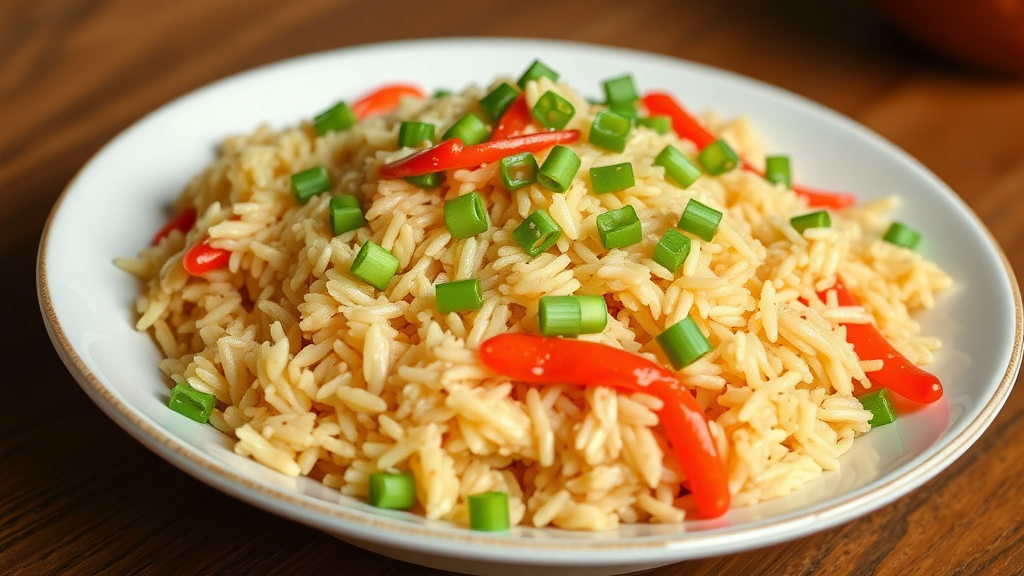

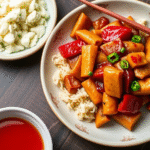
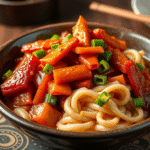
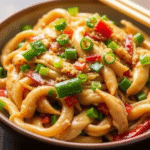
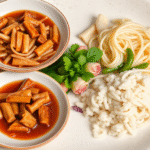
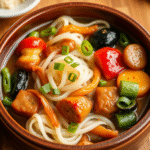
Leave a Reply